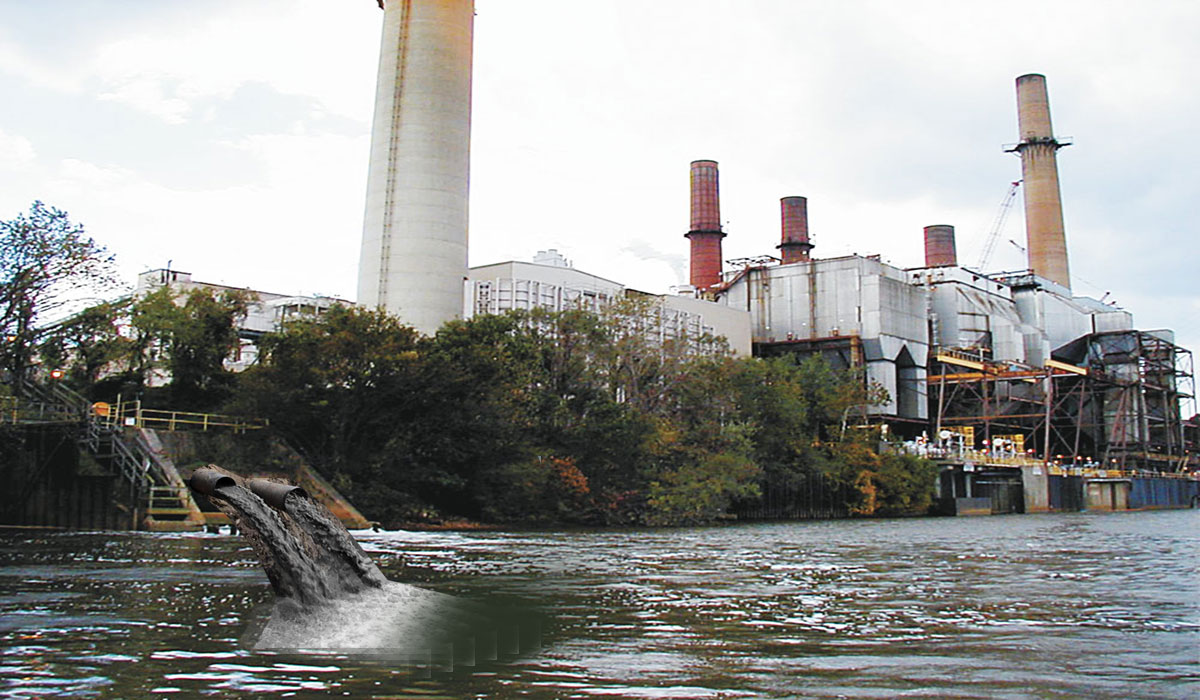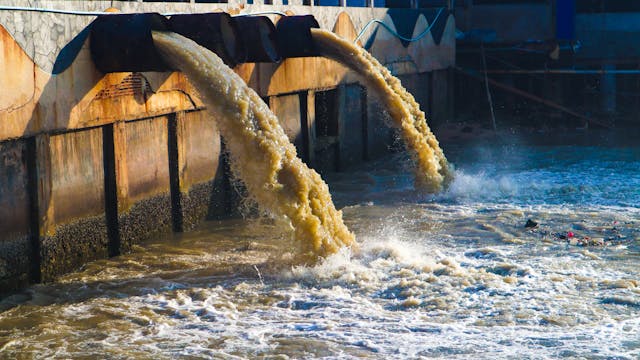Industrial Waste Water Treatment-- Efficient Waste Monitoring for Manufacturing Facilities
Developments and Advances in Industrial Waste Water Treatment Technologies
The landscape of commercial wastewater therapy is going through a transformative shift, driven by advancements that boost both effectiveness and sustainability. Arising innovations, such as membrane layer bioreactors and microbial fuel cells, are redefining contaminant removal procedures while adding to energy generation. Resource recovery methods are acquiring traction, lining up with circular economic climate principles. As regulatory criteria evolve, the assimilation of AI and artificial intelligence right into wastewater management systems assures to improve operations and guarantee compliance. The full effects of these innovations increase crucial inquiries regarding their scalability and long-term influence on market methods.
Review of Waste Water Treatment Technologies
Wastewater therapy innovations incorporate a series of techniques created to get rid of impurities from commercial effluents before their release into the setting. These technologies are essential for keeping ecological balance and making sure conformity with environmental laws. The primary groups of wastewater treatment consist of physical, chemical, and biological methods, each serving distinctive purposes based on the nature of the pollutants existing.

Organic therapy methods utilize microbes to degrade organic issue, making them specifically reliable for organic-rich effluents. Strategies like turned on sludge and biofilm activators harness the natural deterioration capabilities of bacteria, resulting in considerable reductions in biochemical oxygen demand (BOD)
Advanced Filtering Techniques
Advanced filtering methods stand for a vital development in the realm of industrial wastewater treatment, boosting the effectiveness of impurity removal procedures. Industrial Waste Water Treatment. These techniques encompass a series of innovations, consisting of microfiltration, ultrafiltration, nanofiltration, and reverse osmosis, which provide sequential barriers for different bit dimensions and chemical frameworks
Microfiltration and ultrafiltration utilize membrane systems to eliminate suspended solids, bacteria, and larger organic particles, boosting the high quality of effluent previous to more treatment. Nanofiltration links the space in between ultrafiltration and turn around osmosis, properly getting rid of organic compounds and divalent ions, thus minimizing the tons on downstream processes.
Reverse osmosis offers the highest degree of filtration by enabling only water and tiny molecules to pass through its semi-permeable membrane layers, making it ideal for reclaiming top notch water from commercial effluents. Recent improvements in membrane technology, including the development of more sturdy and fouling-resistant materials, have actually substantially improved functional performance and decreased expenses.
Including these innovative filtering techniques not just improves the total therapy procedure however also adds to sustainability initiatives by enabling water reuse and resource recovery in commercial settings. (Industrial Waste Water Treatment)
Organic Therapy Technologies

Moreover, the development of crafted organic systems, such as membrane bioreactors (MBRs), incorporates organic treatment with innovative membrane filtration. This assimilation enables higher effluent top quality and decreased impact, making it appropriate for space-constrained industrial centers. Developments in genetically crafted bacteria have likewise emerged, improving the biodegradation of specific impurities, such as pharmaceuticals and hefty metals, that are commonly challenging to get rid of.
Furthermore, the execution of bioaugmentation techniques, where helpful microbes are introduced to enhance the existing organic treatment procedures, has shown appealing lead to boosting therapy efficiency. These technologies jointly symbolize a trend in the direction of more efficient and lasting organic treatment methods that can adjust to the developing intricacies of commercial wastewater streams. As industries remain check out this site to focus on ecological compliance, these biological technologies will play a vital duty in wastewater management.

Source Recovery Approaches
In commercial settings, the combination of resource recuperation techniques has come to be progressively vital for boosting sustainability and reducing waste. These methods concentrate on extracting beneficial materials and power from wastewater streams, consequently transforming prospective pollutants right into reusable sources.
One prominent strategy is nutrient recuperation, where nitrogen and phosphorus, typically existing in excess in wastewater, are recorded and converted right into fertilizers. This not only lowers environmental influences but likewise provides a circular economic situation service for farming applications. Additionally, innovations such as anaerobic food digestion allow for the conversion of natural waste right into biogas, a renewable power resource that can offset fossil gas usage in industrial operations.
Moreover, progressed filtration and membrane modern technologies facilitate the healing of commercial byproducts such as metals and salts. These recuperated products can be rehabilitated into production processes, minimizing the demand for virgin resources.
Future Trends in Waste Water Administration
As sectors significantly prioritize sustainability, the future of wastewater management is set to go through considerable makeovers. Technical advancements, such as expert system and artificial intelligence, will certainly make it possible for extra reliable monitoring and management of wastewater systems. These technologies can predict maintenance needs, optimize therapy procedures, and boost decision-making, inevitably lowering functional prices and ecological effect.
Additionally, the combination of circular economic climate principles will play an essential role in wastewater management. Industries are anticipated to change in the direction of systems that not only treat wastewater yet additionally recoup useful resources, such as nutrients, water, and energy. This change will certainly lessen waste and promote the reuse of materials, straightening with international sustainability goals.
Emerging therapy methods, such as membrane bioreactors and advanced oxidation procedures, will even more enhance the performance of wastewater treatment, allowing for better effluents suitable for reuse. Additionally, governing frameworks are most likely to progress, highlighting he said more stringent requirements for wastewater discharge and encouraging sectors to embrace innovative therapy services.
Conclusion
In conclusion, the development of commercial wastewater therapy technologies demonstrates a substantial shift towards improved performance and sustainability (Industrial Waste Water Treatment). Innovations in sophisticated filtering strategies, organic treatments, and resource recovery techniques highlight the market's dedication to ecological stewardship.
The landscape of commercial wastewater treatment is undergoing a transformative shift, driven by developments that improve both effectiveness and sustainability.Wastewater therapy modern technologies incorporate an array of methods designed to remove contaminants from industrial effluents before their release into the environment.Utilizing the power of biological processes has led to substantial technologies helpful hints in the therapy of commercial wastewater.In addition, the execution of bioaugmentation approaches, where valuable germs are presented to improve the existing organic treatment processes, has revealed encouraging outcomes in enhancing treatment performance. These innovations jointly indicate a pattern towards more lasting and reliable biological therapy techniques that can adjust to the developing complexities of commercial wastewater streams.